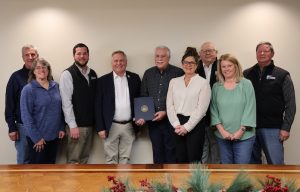Vaccines, then and today

Younger readers of this article may not be familiar with polio or smallpox.
The last case of polio to originate in the United States was in 1979 and the last naturally occurring case of smallpox in the world was in 1980.
Both of the diseases, and numerous others, have been or are currently being eradicated because of vaccines.
Earlier this month, two vaccines for COVID-19 were given the green light for distribution with hopes to reduce and eliminate the spread of the novel coronavirus and return society closer to pre-virus norms.
Greek philosopher and physician Hippocrates was the first recorded person to refute the claim that illnesses were caused by environmental factors and not supernatural means.
It would be nearly 2,300 years until French biologist and vaccine pioneer Louis Pasteur published research presenting a “germ theory” of diseases.
Between the 12th and 15th centuries, the first rudiments of vaccination from smallpox arrived in the process known as variolation.
Variolation immunized individuals by purposefully exposing a person with a small amount of the disease. Tissue from a person infected with smallpox would be applied to small cuts on a healthy person to induce a less severe case of the disease. The result was inoculation – when a substance is introduced that promotes creation of natural antibodies – and immunity.
The process was risky and not entirely effective, but worked well enough to be a common practice in Western medicine during the 1700s until English scientist and physician Edward Jenner performed a groundbreaking experiment in 1796.
A well-known phenomenon of the time was that milkmaids who had contracted cowpox would not be susceptible to smallpox. Jenner took fluid from a woman who had an active case of cowpox – which is form the same family as smallpox but not as contagious and with much milder symptoms – and injected an 8-year-old boy who did not contract smallpox later when Jenner injected him with the virus.
The word vaccine gets its name from this experience, with the word vacca being the Latin word for “cow.”
Jenner developed a reproducible smallpox vaccine in 1798. Even though it was proven to be safe and effective, he could not find volunteers to take the vaccine. Only after the wider English medical community began to support vaccination did the treatment gain popularity, reaching most European countries by 1800.
The deadly and highly contagious disease, which has a 30 percent mortality and is estimated to have killed 300 million people in the 20th century alone is now considered to be eradicated. Routine vaccinations for the disease in the U.S. ended in 1972.
In the 1850s, Pasteur became the next major contributor to slowing the spread of disease.
He was able to identify bacteria and study their effects, leading to a greater understanding of sanitary practices. His findings also led to creation of vaccines by producing an attenuated form – a weaker version that does not produce symptoms – of a disease-causing bacteria and related toxins.
Building on Jenner’s and Pasteur’s findings, vaccines have since been created that have only the part of a disease – the antigen – that is recognized by a person’s immune system to create a defense for both bacterial and viral causes.
Such vaccines were used to eliminate an emerging virus of the 1900s.
The first recorded outbreak in the U.S. of the virus that causes polio happened in 1894. The disease would paralyze or kill an estimated 500,000 people per year during its peak in the 1940s, with most cases occurring in children under the age of 5. Sixty years after its arrival, Jonas Salk had developed a polio vaccine.
The April 13, 1955 issue of the Waterloo Republican summarized local reaction to the announcement by saying “millions of parents throughout the country were overjoyed yesterday morning” upon hearing the news.
The article also noted that the vaccine was only 80-90 percent effective. Even though it was not 100 percent effective, the vaccine eradicated polio through a phenomenon known as “herd immunity.” It happens when a virus has no hosts to infect.
A large amount of people being vaccinated at once or becoming immune over time greatly decreases a disease’s opportunity to spread.
Such is the case with measles, mumps and rubella (German measles). With vaccines available for the former two in the early 1960s and the latter in 1970, those diseases have been kept at bay.
The Nov. 25, 1970 issue of the Waterloo Republican announced that around 2,000 Monroe County children ages 1 through the third grade received the vaccine during a one-day clinic.
The children had already received the vaccine for measles and mumps, and since that time most schools and pediatricians include the MMR vaccine against all three viruses on their scheduled recommendations.
Through these efforts, measles were considered to no longer originate in the U.S. in 2000 and rubella followed in 2004 – although both may still be brought into the country from overseas travel.
Such was the case in 2019, when the Centers for Disease Control and Prevention reported 1,282 cases of measles in the U.S., a vast majority occurring in individuals who did not receive vaccines for the viruses.
The COVID-19 vaccines were released a little more than a year after the novel coronavirus was first identified. Its creation was so speedy in part because of previous research on similar viruses, but also from centuries of existing vaccine science.
These new vaccines are unique in that they use “messenger RNA” to trigger the body’s natural immune responses without introducing the actual virus to a person.
If successful, this vaccine technology will produce enormous benefits for the health of the world – not only with the current pandemic, but well into the future.






